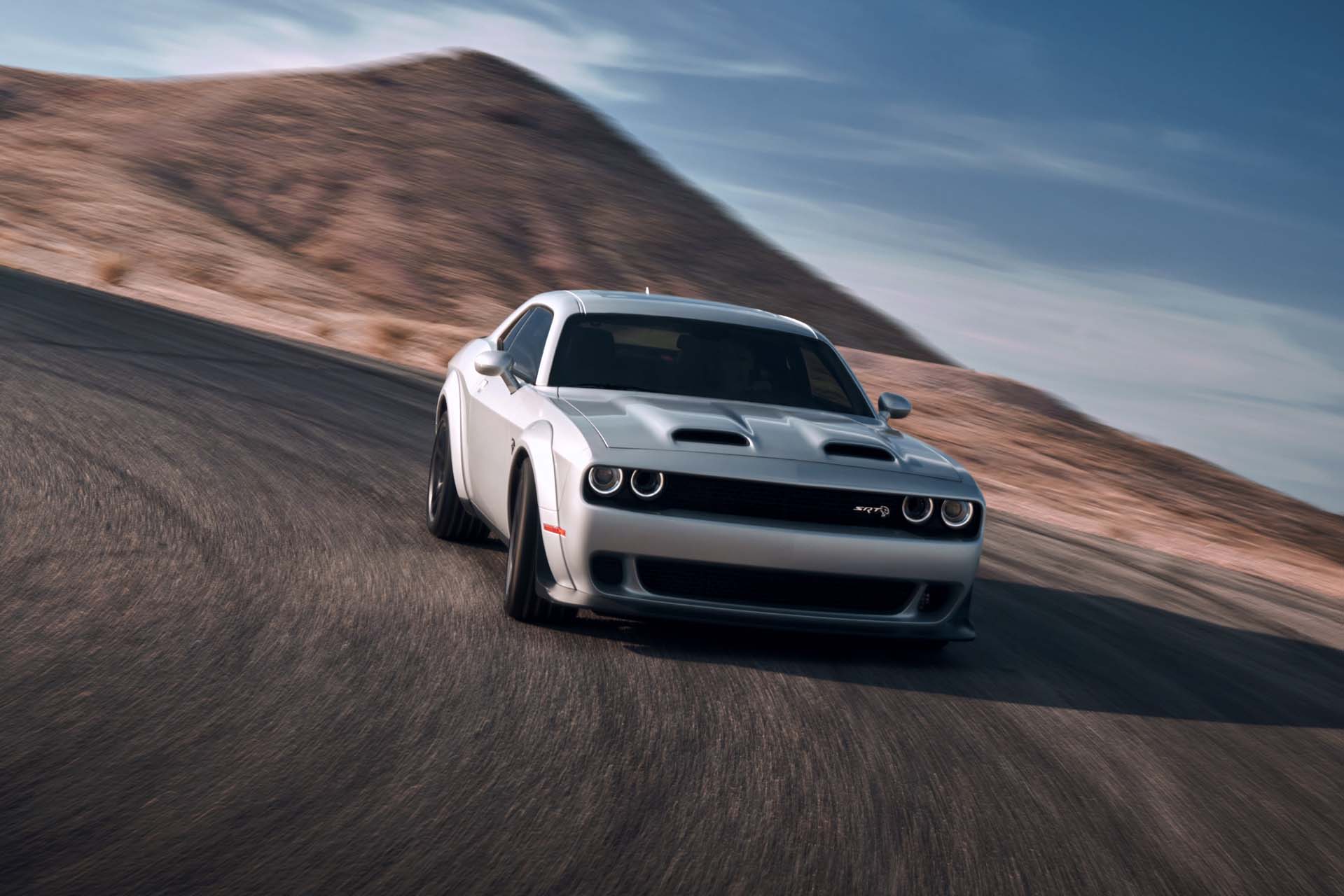
We arrived at peak horsepower in cars like the 2020 Dodge Challenger.
With up to 797 horsepower available, the coupe rivals cars that cost 3 to 30 times more.
It’s an 8 for performance because although its power is prolific, so is its weight. Or, more simply: The 2020 Challenger goes gangbusters in a straight line. (Read more about how we rate cars.)
The Challenger would flex an Excel spreadsheet in raw data, so here’s the short of the long.
Dodge starts with a 3.6-liter V-6 in the Challenger SXT and Challenger GT versions, and they most often make 305 hp and 268 lb-ft. Sent through an 8-speed automatic transmission, the SXT and GT versions power the rear or optionally all four wheels. It’s enough power to satisfy most buyers, but also just enough to whet appetites for a V-8, too.
The Challenger’s V-8 menu starts with a 5.7-liter available in R/Ts that makes 375 hp and 410 lb-ft. That power is sent through a 6-speed manual or optional 8-speed automatic toward the rear wheels only. There’s enough satisfying twist, but the R/T’s best trick is its deep burble.
The R/T Scat Pack swaps in a lusty 6.4-liter V-8 (392 cubic inches, hence the badges) that makes 485 hp and 476 lb-ft, which is mated to a 6-speed manual or 8-speed auto. Acceleration is a blur: just 4.4 seconds to 60 mph in the R/T Scat Pack. A dragstrip ready version of the R/T Scat Pack is called the 1320—it’ll run a quarter-mile in less than 12 seconds.
Not satisfied? You’re covered. The Challenger SRT Hellcat straps a supercharger on top of a 6.2-liter V-8 for 717 hp and 0-60 mph run in 3.5 seconds. It’s available with an 8-speed automatic or a 6-speed manual, and here’s your straightjacket.
If you need to shave the last tenth off that 0-60-mph time, you’ll have to pay more. The Hellcat Redeye makes 797 hp from its 6.2-liter supercharged V-8, but only gets an 8-speed automatic. It’s ferocious and can make the quarter-mile dash a sub-11-second blur for more than $70,000 to start. Approach carefully and keep your hands and arms close.
Suspension and handling
The Challenger weighs as much as some minivans, but it uses clever tuning and adaptive dampers on some models to adequately handle corners. It doesn’t cope as well as competitors such as the Camaro and Mustang, but the Challenger hustles hard down every inch of pavement.
The R/T Scat Pack is a great compromise between everyday drivability and track prowess, although it can’t outrun its physical dimensions—it’s big and heavy and feels like both sometimes.
The Widebody versions of the Challenger are the most confident, thanks to 2.5 added inches of width and beefier tires.
Mash the throttle too soon and the Challenger loves to step out of shape. Overcook it and the back end will swap with the front end faster than you can say “What’s oversteer?”
We’d advise a track day with any Challenger, but especially the SRT versions.
Review continues below
0 Kommentarer